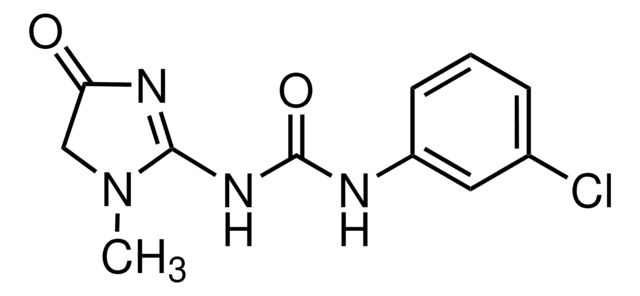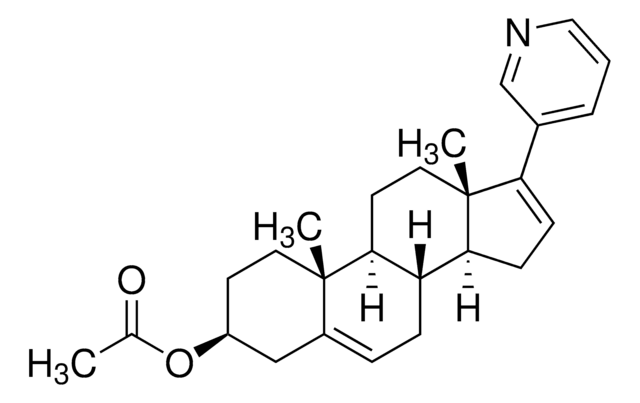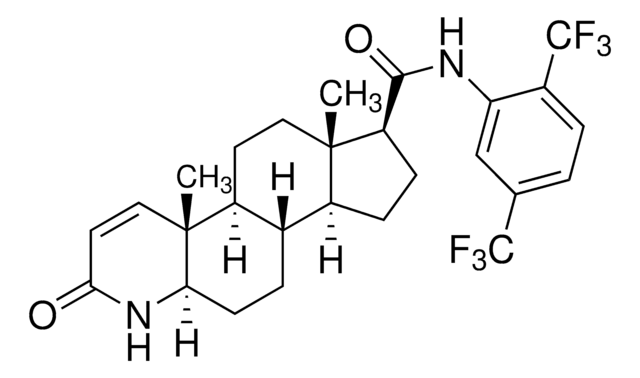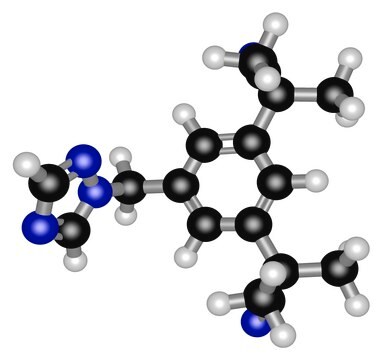B9061
Bicalutamide (CDX)
≥98% (HPLC), powder
Sinonimo/i:
Casodex, Cosudex, N-[4-Cyano-3-(trifluoromethyl)phenyl]-3-[(4-fluorophenyl)sulfonyl]-2-hydroxy-2-methylpropanamide
About This Item
Prodotti consigliati
Saggio
≥98% (HPLC)
Stato
powder
Condizioni di stoccaggio
desiccated
protect from light
Solubilità
DMSO: >5 mg/mL
H2O: insoluble
Ideatore
AstraZeneca
Stringa SMILE
CC(O)(CS(=O)(=O)c1ccc(F)cc1)C(=O)Nc2ccc(C#N)c(c2)C(F)(F)F
InChI
1S/C18H14F4N2O4S/c1-17(26,10-29(27,28)14-6-3-12(19)4-7-14)16(25)24-13-5-2-11(9-23)15(8-13)18(20,21)22/h2-8,26H,10H2,1H3,(H,24,25)
LKJPYSCBVHEWIU-UHFFFAOYSA-N
Informazioni sul gene
human ... AR(367)
Cerchi prodotti simili? Visita Guida al confronto tra prodotti
Applicazioni
Azioni biochim/fisiol
Caratteristiche e vantaggi
Avvertenze
Danger
Indicazioni di pericolo
Consigli di prudenza
Classi di pericolo
Aquatic Chronic 1 - Carc. 2 - Repr. 1B
Codice della classe di stoccaggio
6.1C - Combustible acute toxic Cat.3 / toxic compounds or compounds which causing chronic effects
Classe di pericolosità dell'acqua (WGK)
WGK 3
Punto d’infiammabilità (°F)
Not applicable
Punto d’infiammabilità (°C)
Not applicable
Dispositivi di protezione individuale
dust mask type N95 (US), Eyeshields, Gloves
Scegli una delle versioni più recenti:
Possiedi già questo prodotto?
I documenti relativi ai prodotti acquistati recentemente sono disponibili nell’Archivio dei documenti.
I clienti hanno visto anche
Il team dei nostri ricercatori vanta grande esperienza in tutte le aree della ricerca quali Life Science, scienza dei materiali, sintesi chimica, cromatografia, discipline analitiche, ecc..
Contatta l'Assistenza Tecnica.











